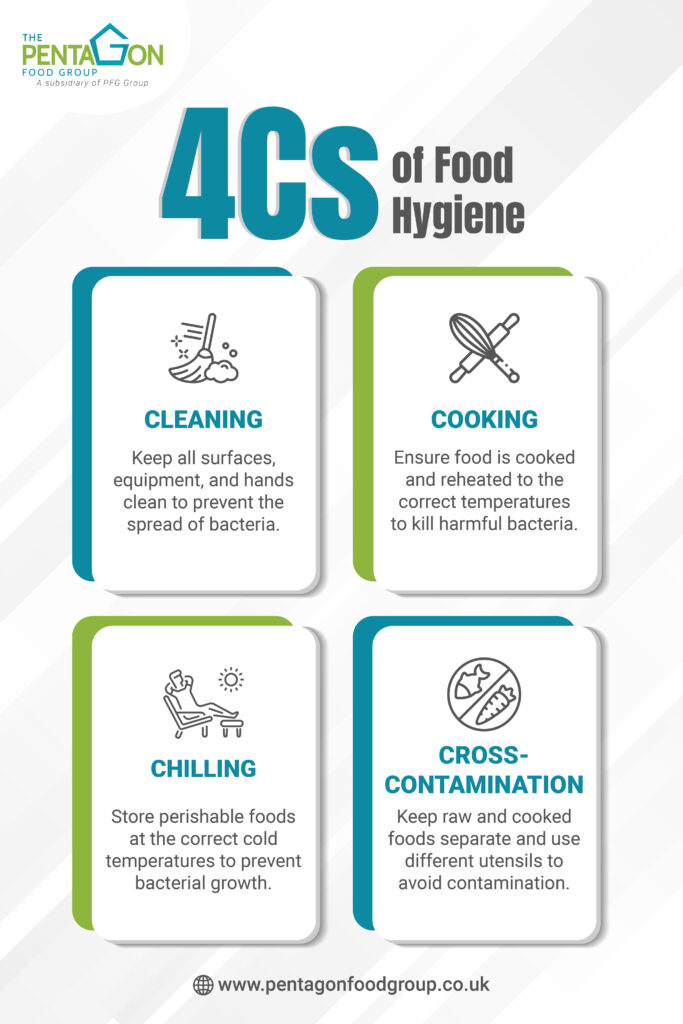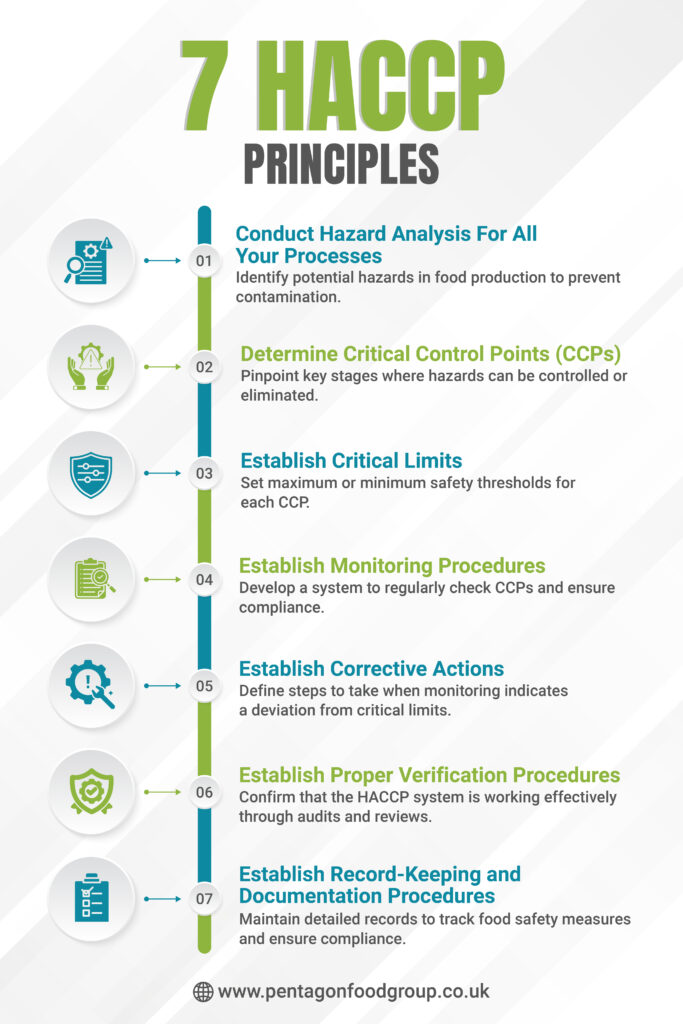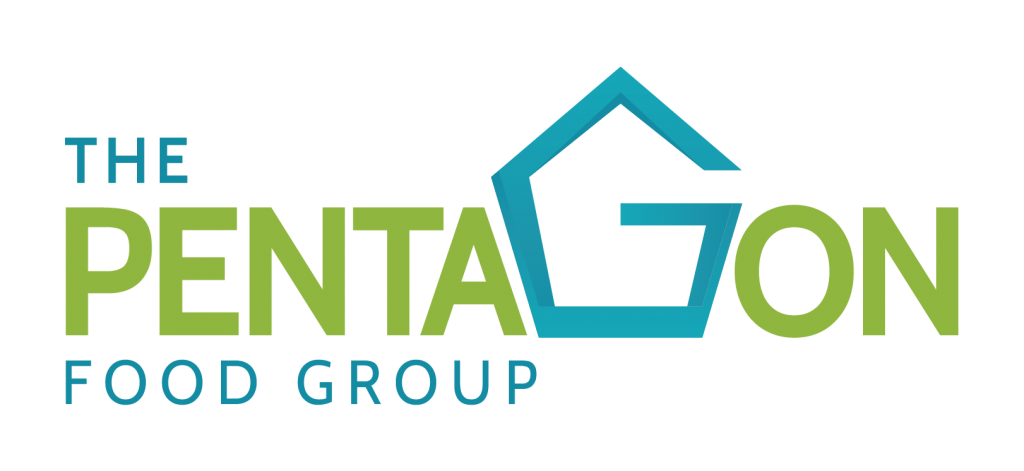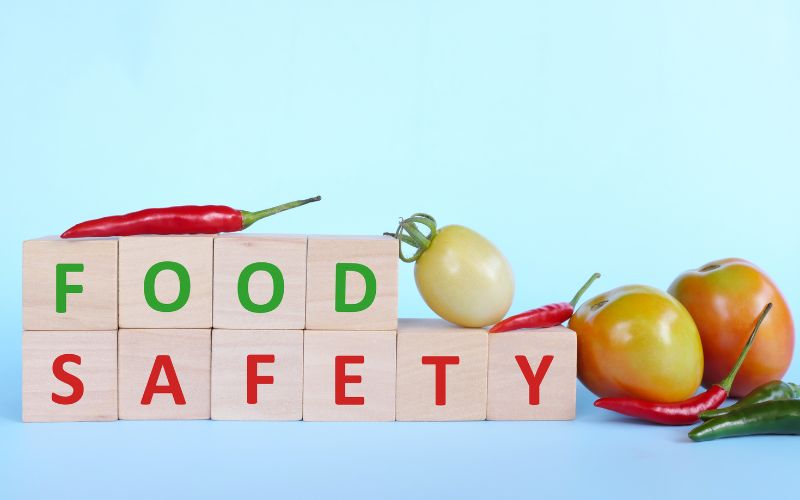Did you know that 600 million people worldwide fall ill from contaminated food each year, and 420,000 die every year according to the World Health Organization?
Ensuring food safety is a critical responsibility for anyone in the food business, whether you operate a restaurant, takeaway, fast food outlet, or other food service establishment. Adhering to food safety regulations not only protects your customers’ health but also enhances your business’s reputation and legal standing.
This comprehensive guide will provide you with actionable steps to comply with food safety regulations, drawing from best practices and legal requirements.
Understanding Food Safety Regulations
Food safety regulations are designed to prevent foodborne illnesses and ensure food is safe for consumption. They cover a wide range of practices, including food handling, storage, preparation, and sanitation. In the UK, key regulatory bodies like the Food Standards Agency set these standards and enforce compliance. Two fundamental pieces of legislation in the UK are the Food Safety Act 1990 and the Food Hygiene (England) Regulations 2006.
Food Safety Act 1990: This is a fundamental piece of legislation in the UK that sets out the responsibilities of food businesses to ensure that food is safe to eat, does not mislead consumers, and is of the nature, substance, or quality demanded by the consumer.
Food Hygiene (England) Regulations 2006: These regulations are essential for maintaining hygiene standards in food businesses. They encompass premises, equipment, food handling, and personal hygiene requirements.
Key Principles of Food Safety

By following the 4Cs, Cleaning, Cooking, Chilling, and Cross-Contamination—you can prevent the most common food safety risks and ensure a safe environment for food handling.
1. Personal Hygiene
- Handwashing: Employees should wash their hands thoroughly with soap and water before handling food, after using the restroom, and after any activity that could contaminate hands (e.g., handling raw meat, taking out the trash).
- Protective Clothing: To prevent contamination, staff should wear clean uniforms, aprons, and hairnets. Jewellery should be kept to a minimum.
- Health Checks: Employees should be encouraged to report any illnesses. Those showing symptoms of foodborne illnesses (e.g., vomiting, diarrhea) should be excluded from food handling areas until they are symptom-free.
2. Cooking & Cross-Contamination
- Temperature Control: Maintain proper temperatures for storing and cooking food. Cold foods should be stored at 5°C (41°F) or lower, while hot foods should be kept at 63°C (145°F) or higher.
- Cross-Contamination Prevention: Use separate cutting boards and utensils for raw and cooked foods. Store raw meat, poultry, and seafood below cooked or ready-to-eat foods in refrigerators.
- Cooking and Reheating: Cook food to the recommended internal temperatures to kill pathogens. For example, poultry should reach 75°C (165°F). When reheating, ensure food reaches at least 74°C (165°F).
3. Cleaning
- Cleaning Schedules: Implement and maintain a regular cleaning schedule for all areas of the kitchen, including surfaces, equipment, and utensils.
- Sanitisers and Disinfectants: Use appropriate sanitisers to clean food contact surfaces. Ensure that sanitisers are food-safe and used according to the manufacturer’s instructions.
- Pest Control: Regularly inspect the premises for signs of pests and take immediate action to eliminate any infestations. Keep doors and windows closed or screened.
4. Chilling & Cross-Contamination
- Labelling and Dating: Clearly label and date all food items, including leftovers, to ensure they are used within safe time limits.
- First In, First Out (FIFO): Implement the FIFO system to use older stock first, reducing the risk of expired food.
- Proper Storage: Store food in clean, sealed containers. Ensure dry goods are stored off the floor and away from walls to facilitate cleaning and pest control.
- . Chilling: Maintain proper temperatures for storing food. Cold foods should be stored at 5°C (41°F) or lower, while hot foods should be kept at 63°C (145°F) or higher.
To manage food hygiene and safety procedures in your food business, you should follow Hazard Analysis and Critical Control Point (HACCP) principles.
7 HACCP principles include:

- Conduct Hazard Analysis for all your processes – Identify potential hazards in food production to prevent contamination.
- Determine Critical Control Points (CCPs) – Pinpoint key stages where hazards can be controlled or eliminated.
- Establish Critical Limits – Set maximum or minimum safety thresholds for each CCP.
- Establish Monitoring Procedures – Develop a system to regularly check CCPs and ensure compliance.
- Establish Corrective Actions – Define steps to take when monitoring indicates a deviation from critical limits.
- Establish Proper Verification Procedures – Confirm that the HACCP system is working effectively through audits and reviews.
- Establish Record-Keeping and Documentation Procedures – Maintain detailed records to track food safety measures and ensure compliance.
HACCP involves:
- looking closely at what you do in your business, what could go wrong and what risks there are to food safety
- identifying any critical control points the areas a business needs to focus on to ensure those risks are removed or reduced to safe levels
- deciding what action you need to take if something goes wrong
- making sure that your procedures are being followed and are working
- keeping records to show your procedures are working
It is important to have food safety management procedures that are appropriate for the size and scale of your business.
Implementing a Food Safety Management System (FSMS)
A Food Safety Management System helps food businesses systematically manage food safety risks and ensure compliance with regulations. Here’s how to implement an effective FSMS:
1. Hazard Analysis and Critical Control Points (HACCP)
- Hazard Analysis: Identify potential hazards in your food processes (biological, chemical, and physical).
- Critical Control Points (CCPs): Determine the points in the process where controls can be applied to prevent or eliminate hazards.
- Critical Limits: Establish critical limits for each CCP (e.g., cooking temperature, pH levels).
- Monitoring Procedures: Set up procedures to monitor CCPs to ensure they remain within critical limits.
- Corrective Actions: Develop actions to take when monitoring shows that a CCP is not within the established limits.
- Verification Procedures: Regularly review and verify that the HACCP system is working effectively.
- Record-Keeping: Maintain documentation of all procedures, monitoring, and corrective actions.
2. Training and Education
- Employee Training: Provide comprehensive training to all employees on food safety practices and their role in maintaining safety standards.
- Ongoing Education: Keep staff updated on new food safety regulations and best practices through regular training sessions.
3. Regular Audits and Inspections
- Self-Inspections: Conduct regular internal inspections to identify and correct potential food safety issues.
- Third-Party Audits: Engage third-party auditors to review your food safety practices and provide an objective compliance assessment.
- Government Inspections: Prepare for inspections by regulatory bodies by keeping your premises and documentation in order.
Staying Updated with Regulations
Food safety regulations can change, and staying informed about the latest requirements is crucial. Here’s how:
- Subscribe to Updates: Sign up for newsletters and updates from regulatory bodies like the FSA, or local health departments.
- Professional Associations: Join professional associations related to your industry, often providing resources and updates on regulatory changes.
- Networking: Engage with other food business owners and managers through networking events, forums, and social media groups to share information and best practices.
Conclusion
Adhering to food safety regulations is essential for the success and reputation of your food business. By implementing robust food safety practices, training your staff, and staying informed about regulatory changes, you can ensure that your establishment provides safe and high-quality food to your customers. Remember, food safety is not just a regulatory requirement but a commitment to the well-being of your customers and the integrity of your business.
FAQs:
1. Why is food safety important for my business?
Food safety prevents contamination, protects customers from illness, and ensures compliance with legal regulations.
2. What are the key food safety regulations I must follow?
You must follow hygiene laws, proper food handling, temperature control, allergen management, and regular staff training.
3. How can I maintain proper hygiene in my food business?
Ensure staff wash hands frequently, keep surfaces clean, store food correctly, and use protective gear like gloves and hairnets.
4. What temperature should I store food at?
Refrigerated food should be kept below 5°C, frozen food at -18°C or lower, and hot food above 63°C.
5. How do I prevent cross-contamination?
Use separate utensils and storage areas for raw and cooked foods, clean surfaces regularly, and follow strict hygiene practices.
6. How often should I train my staff on food safety?
Staff should receive initial training and regular refresher courses to stay updated on food safety regulations.
7. What records should I keep for food safety compliance?
Maintain records of temperature logs, cleaning schedules, supplier details, and staff training records for inspections.
8. What should I do if there’s a food safety breach in my business?
Take immediate corrective action, document the incident, retrain staff if needed, and report to relevant authorities if required.
9. How often should I get a food safety inspection?
Inspections depend on local laws, but regular self-audits and annual professional checks help maintain compliance.






